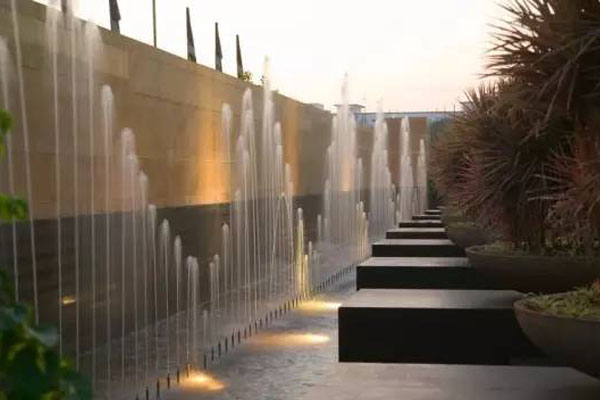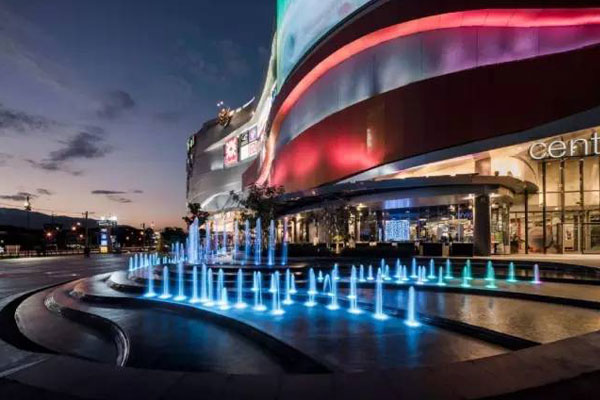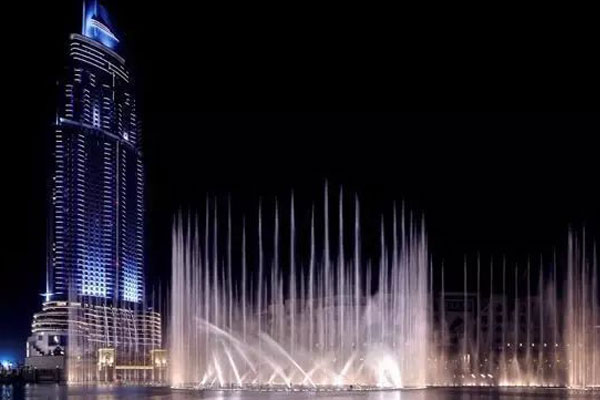25 Apr 2020
The main advantage of the dry land musical fountain is the scientific use of land area. It can not only occupy the land area, but also ask the performance of the fountain water feature, which has a higher level of safety performance than the ordinary fountain water feature. And when not performing the inner fountain, its ground is a good place for people to play, realizing one place and two uses. But at the same time, the dry land fountain has a certain limit to the water type design.
Here is some points of dry floor fountain:
Main scene and background scene
In various artistic creations, first determine the theme, subtopics, focus, general, protagonist, supporting role, main scene, scene and other relationships. Therefore, the layout of the garden should first consider the main artistic image, that is, the main landscape of the garden under the premise of determining the topic. The main scenery can be strengthened by matching, supporting and supporting the secondary scenery.
In order to express the theme, the main methods of highlighting the main scenes in gardens and architectural arts usually adopt the following techniques:
1. Central axis symmetry In the layout, determine an axis in a certain direction. The main scene is usually arranged above the axis. On the two sides in front of the main scene, one or several pairs of secondary scenes are often arranged to accompany the main scene. Such as Tiananmen Square, Versailles Palace, Guangzhou Uprising Martyrs Cemetery, etc.

2. The elevation of the main scene The elevation of the main scene is like standing tall, which is a common and commonly used artistic method. The elevation of the main scene is often used in conjunction with the central axis symmetry method. Such as the memorial gardens in Washington, DC, and the memorial monument for the Beijing People ’s Heroes.
3. The intersection of the horizontal arched horizontal visual quadruple space In the gardens, the circular arched quadruple space mainly appears in a wide horizontal landscape or surrounded by mountains surrounding the basin-type garden space, such as Santan Yinyue in Hangzhou West Lake. The grassland in the forest surrounded by earth hills and woods in the natural garden is also a quadruple space surrounded by arches. There are pole forest belts around, and the main scene is arranged on the visual junction, which can play a prominent role in the main scene.
4. Composition center of gravity potential energy The center of gravity of triangles and circular patterns is the center of geometric composition, which is often the best place to deal with the prominence of the main scene and achieve the best signal-energy effect. The visual center of gravity of the natural landscape garden is at the center.
5.Gradient method Gradient method refers to the landscape scene situation. It adopts the gradual method, from low to high, and gradually upgrades, from the secondary scene to the main scene, the level is introduced.
Contrast and reconciliation
Contrast and reconciliation are the basic laws of unity and change in the layout, and the specific expression of the image of the object. Use sudden changes in the scene to produce an effect that evokes interest. The method of reconciliation is mainly expressed through the unity and coordination of layout forms and gardening materials.
In the garden design, the knot ratio technique is mainly used in spatial contrast, density contrast, contrast between virtual and real, contrast between concealed and exposed, high and low contrast, Quzhi contrast, etc. The main scene and the background scene itself are a form of contrast between "primary and secondary contrast".

Rhythm
In the garden layout, the same scenes often appear repeatedly. Such repeated appearances and layouts are the application of rhythm and rhythm in the garden. Rhythm can be divided into continuous rhythm, gradient rhythm, interlaced rhythm, undulating rhythm and other processing methods.
Balance and stability
In the garden layout, they are divided into static and all rely on momentum to obtain equilibrium, or quasi-symmetric equilibrium. The symmetrical equilibrium is a static equilibrium. Generally, the scenes on both sides of the main shaft are composed of equal distance, volume, and form to equalize the gaseous equilibrium. Quasi-symmetrical equilibrium means that the main axis is not on the center line, and the sceneries on both sides are not equal in shape, size, and distance from the main axis, but the two sceneries are in dynamic equilibrium.
Scale and ratio
Any object, regardless of any shape, must have three directions, namely the measurement of length, width and height. Proportion is to study the relationship between the three. Any garden landscape must study the three relations of duality. One is the three-dimensional space of the scenery itself; the other is the whole and part. The scale in the garden refers to the comparison of the various components in the garden space with objects of a certain natural scale. Functional, aesthetic and environmental characteristics determine the scale of garden design. The scale can be divided into variable scale and immutable scale. The immutable scale is a scale determined according to the general size of the general human body. Variable scales such as the shape of the building, the size of the statue, the width of the bridge view, etc. all depend on the specific circumstances. Exaggerated scales are often used in gardens. Exaggerated scales are often used to enlarge or reduce the scenery to meet the needs of gardening and landscaping.

Keywords: musical fountain
Originally published 25 Apr 2020, updated 25 Apr 2020.